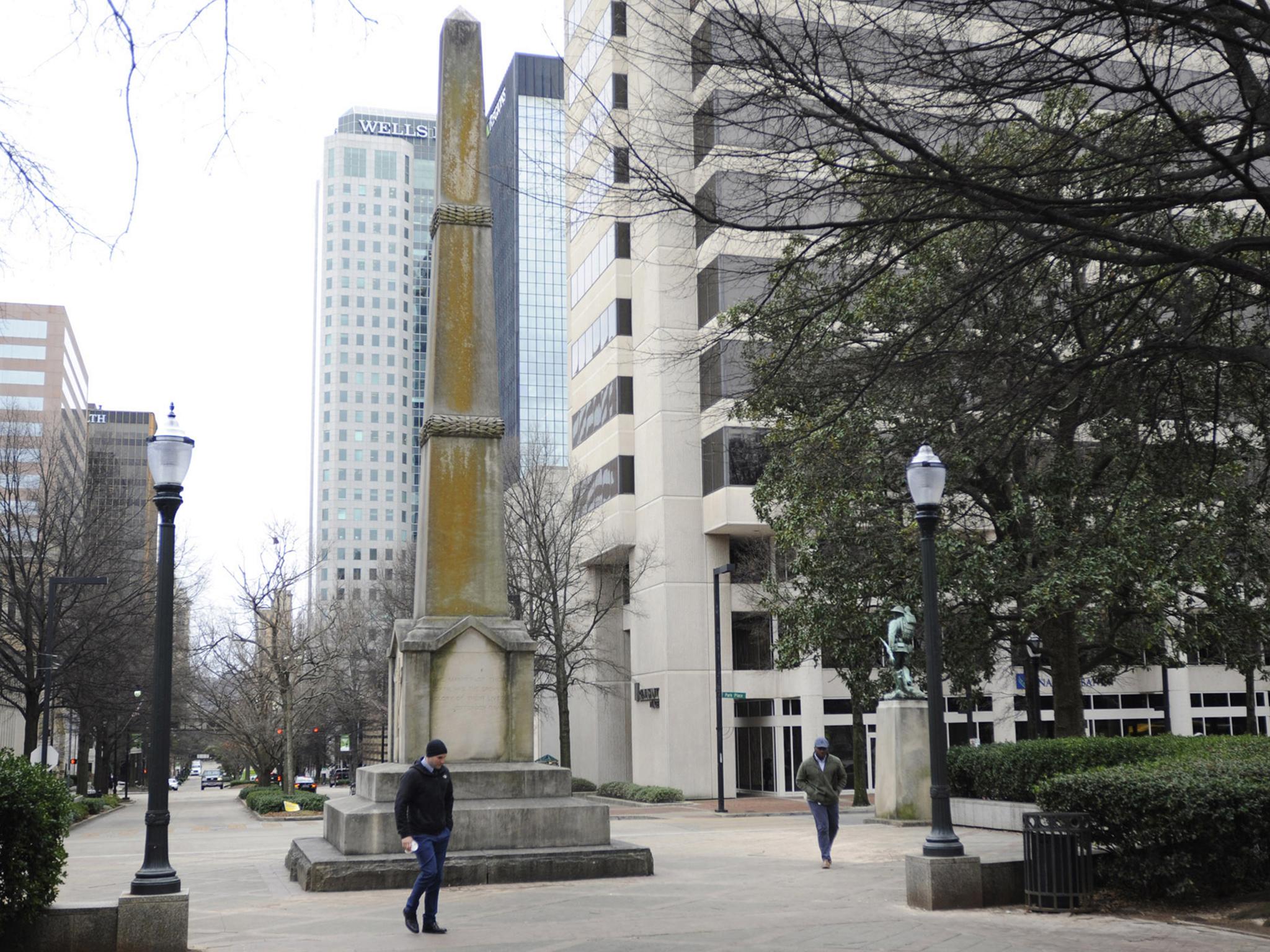George Floyd: Alabama mayor orders removal of Confederate monument after protesters target it
City risks lawsuit over removal of racist statue

Your support helps us to tell the story
From reproductive rights to climate change to Big Tech, The Independent is on the ground when the story is developing. Whether it's investigating the financials of Elon Musk's pro-Trump PAC or producing our latest documentary, 'The A Word', which shines a light on the American women fighting for reproductive rights, we know how important it is to parse out the facts from the messaging.
At such a critical moment in US history, we need reporters on the ground. Your donation allows us to keep sending journalists to speak to both sides of the story.
The Independent is trusted by Americans across the entire political spectrum. And unlike many other quality news outlets, we choose not to lock Americans out of our reporting and analysis with paywalls. We believe quality journalism should be available to everyone, paid for by those who can afford it.
Your support makes all the difference.As the sun set on an extraordinary day of civil unrest across America, the mayor of Birmingham, Alabama, ordered the removal of a contentious Confederate monument from a public park.
One day after dozens of protesters targeted the statue, the 115-year-old Confederate Soldiers & Sailors Monument in Linn Park, defacing and chipping away at its base, the mayor said it would be removed. A large crane arrived shortly before 8pm, in the final hours of Jefferson Davis Day, the state holiday in Alabama honouring the Confederate leader.
The statue has been at the centre of a legal fight between the city and the state’s attorney general’s office, with the city wanting it removed but ultimately losing the battle. Still, Randall Woodfin, the mayor of the majority black city, approved the removal on Monday in defiance of the Alabama Monuments Preservation Act, setting the stage for another showdown.
On Sunday night, demonstrators gathered at the park, in downtown Birmingham, to protest the killing of George Floyd, a black man who died last week after a white police officer in Minneapolis pressed his left knee into Floyd’s neck for nearly nine minutes.
Protests have since spread across the country, and the officer, Derek Chauvin, has since been fired and charged with third-degree murder and second-degree manslaughter.
In Linn Park on Sunday, the demonstration turned violent. Some of the protesters targeted the statue’s 52-foot-tall sandstone obelisk, spray-painting and chipping at its base. They also tried to topple it using a rope and a truck, according to news reports.
On Monday, Mr Woodfin vowed to take the statue down. He said its very presence would cause more unrest and division and would pose continued threats to public safety, outweighing any legal implications.
“In order to prevent more civil unrest, it is very imperative that we remove this statue,” Mr Woodfin told The Birmingham News. “I understand the AG’s office can bring a civil suit against the city, and if there’s a judgment rendered from a judge then we should be held accountable, and I am willing to accept that because that is a lower cost than civil unrest in our city.”
By about 8pm on Monday, heavy equipment arrived at the park, including a crane, a forklift and a flatbed trailer. Once the statue is removed, it will be taken to an undisclosed location.
The monument had been covered with a tarp while the lawsuit between the state attorney general and the city played out. Last year, the Alabama Supreme Court ruled that the city had to pay a $25,000 (£20,000) fine for its obstruction of the monument, according to Mike Lewis, a spokesperson for the attorney general’s office.
The attorney general, Steve Marshall, vowed to file a new civil complaint against the city if the monument was removed.
Across the country, in at least six states, anger over Floyd’s death has given way to the damaging or defacing of more than a dozen symbols of the Confederacy.
“In the same way people may view the police as the front face of the state, Confederate symbols are seen as the front face of a white supremacist ideology,” said Susan Glisson, who owns a Mississippi consulting firm specialising in racial dialogue and healing. “So it’s no surprise they were targeted.”
Last year, Mr Woodfin offered to give the statue away for free. The pitch was just another chapter in a long heritage-versus-hate discussion about what to do with Confederate symbols.
“Any Confederate museum that wants this thing can have it,” Mr Woodfin said in a 2019 interview. “I’ll give it to them right now. Hell, I’m even willing to give them whatever they need to get it to them.”
The New York Times
Join our commenting forum
Join thought-provoking conversations, follow other Independent readers and see their replies
Comments